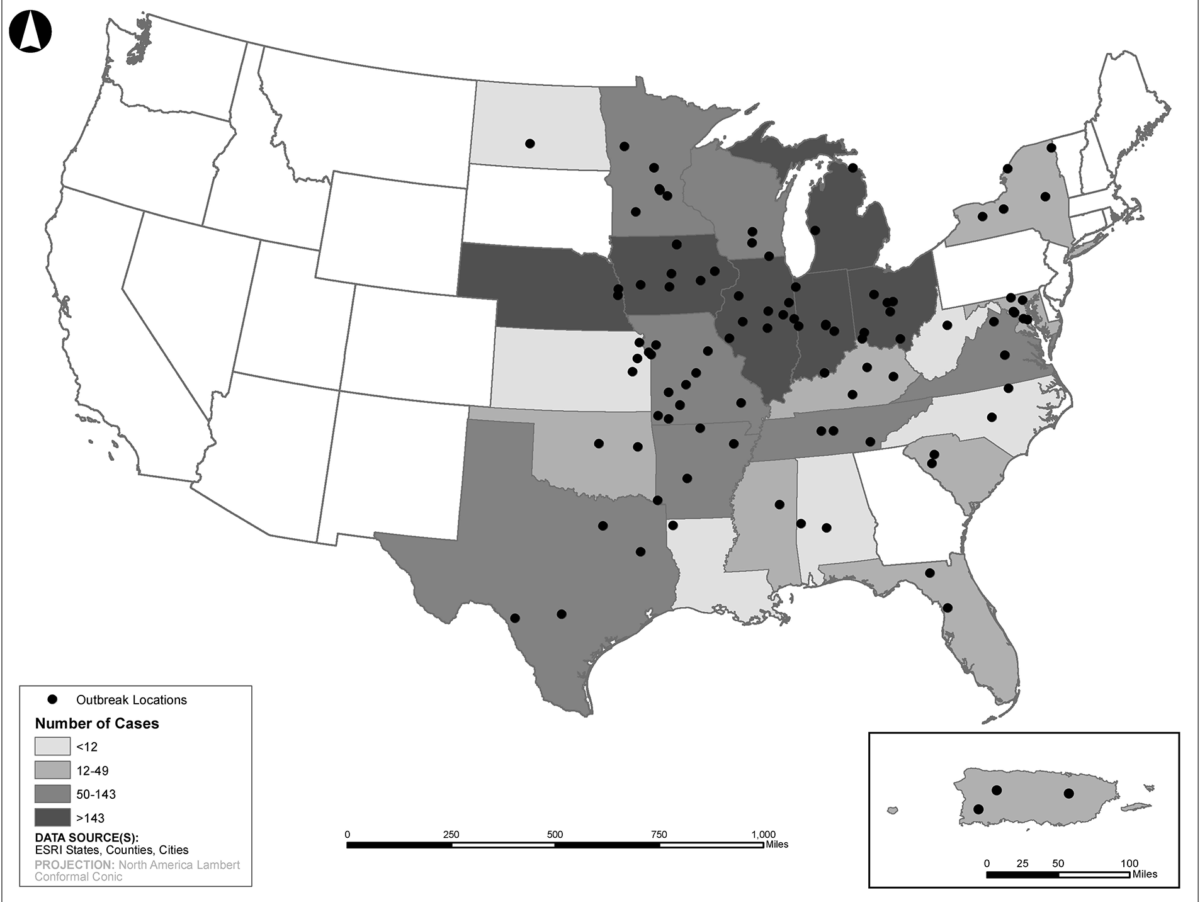A dangerous, drug-resistant fungus called Candida auris (C. auris) has been spreading across the United States over the past few years. While the recent outbreak in a Seattle hospital has thrust C. auris into headlines, this fungal infection has been mushrooming in the shadows for over half a decade.
I vividly remember the first time I heard about this sneaky fungus. It was the fall of 2016 and I was visiting my grandmother in a Chicago nursing home. A nurse whispered to me that a patient down the hall had a “mysterious infection” they couldn’t identify. “We just got the lab results back,” she said. “It’s something called Candida auris.” I could hear the concern in her voice.
Little did I know, in the years to come, C. auris would metastasize into a full-blown health crisis. The CDC now classifies this fungal infection as a “serious global health threat.” And as you’ll see from the disturbing map below, C. auris has spread to almost every corner of America.
The Fungal Map of Doom
In 2016, the year I first heard C. auris’ name, there were only 63 clinical cases reported in the entire country. By the end of 2022, that number skyrocketed to a staggering 2,377 clinical cases.
Just look at how this fungal beast has ravaged the Midwest. Illinois had 6 cases in 2016. Six years later, there are now over 250. Indiana and Kentucky have also seen frightening growth.
You can visually track the alarming spread for yourself in the CDC’s up-to-date fungal hotspot map below. Each colored dot represents confirmed clinical cases.

What makes this map so disturbing is that C. auris continues to multiply rapidly, even with infection control measures in place. Unlike other fungi, this one laughs in the face of antifungal medication. C. auris is resistant to all three major classes of antifungal drugs.
According to Johns Hopkins infectious disease specialist, Dr. Aaron Milstone, “C. auris is resistant to all the typical anti-fungal’s we have.”
How Does Someone Get Infected?
While scientists still don’t know exactly where C. auris came from or how it evolved, they do understand how this villain spreads.
C. auris transmits easily between people, especially in healthcare environments like hospitals and nursing homes. The fungus lingers on surfaces and medical equipment long after a patient leaves.
You can also catch it through direct contact with an infected patient’s blood or wounds. Even someone with no symptoms can still spread C. auris to others.
Who’s Most at Risk?
Very sick hospital and nursing home patients with weakened immune systems are the most vulnerable to C. auris. Especially high risk groups include:
- The elderly
- Preterm infants
- Those recovering from surgery
- People with diabetes, kidney disease, asthma, COPD
- Anyone on an antibiotic or corticosteroid regimen
For those with compromised immunity, C. auris can be a silent killer. Over 1 in 3 patients with an invasive infection die. What’s even more terrifying is that many patients don’t realize they are infected until it’s too late.
What Are the Symptoms?
Because symptoms can be nonspecific, C. auris often evades early detection. According to the CDC, there is no “single set of symptoms” that signals a C. auris infection.
Some common signs to watch out for include:
- Fever or chills
- Unexplained sweating
- Low blood pressure
- Wounds not healing properly
- Bloodstream infections
- Sepsis
If you experience any of these symptoms after undergoing surgery, taking antibiotics, or staying in a healthcare facility, insist your doctor test you for C. auris. Getting diagnosed quickly is critical for effective treatment.
How To Protect Yourself and Others
While C. auris continues its ruthless spread across America, there are a few things you can do to lower your risk:
- Wash your hands frequently with soap and water
- Use alcohol-based hand sanitizer
- Ask healthcare workers if they’ve disinfected equipment
- Remind staff to practice good hand hygiene
- Keep wounds clean and covered
- Request screening if you suspect exposure
- Report cases to health authorities
I wish I could erase the disturbing image of this fungal map from my mind. But the reality is, C. auris will likely continue to colonize new territory in the years ahead. Our best defense is arming ourselves with information and insisting healthcare facilities uphold stringent infection control protocols.
Stay vigilant, my friends.






















